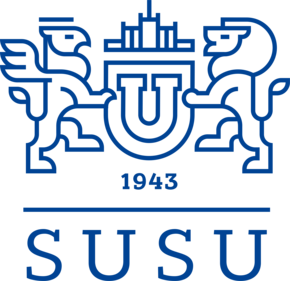Intermetallic compounds feature a number of useful properties (e.g., high hardness, corrosion resistance, etc.), but their widespread industrial application is hampered by one key drawback: high brittleness. A team of SUSU scientists has proposed an original solution to this problem.
The novelty of the research by the SUSU scientists lies in the targeted microalloying of a multicomponent intermetallic compound with boron to reduce its brittleness and increase its ductility. Specifically, the researchers from the major university in the South Ural region for the first time used boron to improve the properties of a complex intermetallic alloy: according to experimental data, the metal became less brittle and more flexible and ductile.
During the research, two materials were synthesized and analysed in detail: without boron (for comparison) and with the addition of boron.
.jpg)
Fig. 1. X-ray diffraction patterns (a) and a magnified image of the main diffraction peak (b) of the CCIMA samples after heat treatment (the stoichiometric sample is in the solidified state). Inverse SEM images and the corresponding EDS maps of the CCIMA samples: as-cast stoichiometric Ni39.6Co25.4Fe10Al13.8Ti6.2Ta3Nb2 (c), as-cast (d) and recrystallized (e) non-stoichiometric Ni39.6Co29.3Fe10Al13.8Ti4.3Ta2Nb1, as well as as-cast boron-doped (e) and recrystallized boron-doped (g) CCIMA sample (Ni39.6Co29.3Fe10Al13.8Ti4.3Ta2Nb1)98.5B1.5.
The developed material is a non-stoichiometric, boron-doped, chemically complex intermetallic alloy with a two-phase microstructure.
Experiments showed that the addition of boron significantly improved the alloy's mechanical properties. A significant combination of high strength and ductility was achieved.
The developed material was produced using smelting and high-energy mechanochemical synthesis/milling. Coating samples were produced using detonation spraying of the resulting powder.
The obtained alloy can be used to create high-strength and chemically resistant coatings that are resistant to high-temperature corrosion (oxidation), as well as to the effects of electrolytes: acids, salt water, etc.
This opens up prospects for the use of the obtained material in the aerospace industry, automotive industry and energy generation (thermal and nuclear power plants).
This new phase of research is supported by the Priority 2030 program: the applied development of this topic is in progress and several active steps towards commercialization are being taken. However, before this can happen, the team of scientists must address a number of challenges related to:
- technology scaling;
- cost-effectiveness assessment;
- additional applied testing on real products to demonstrate reliability to potential industrial partners.
.jpg)
Fig. 2. TEM (a–c), HRTEM (d–g), and corresponding SADP (h–k) images of as-cast stoichiometric (a, d, g, h), recrystallized non-stoichiometric (b, d, i, j), and recrystallized boron-doped (c, f, k, l) CCIMAs.
The results of the study underwent a rigorous peer-review process and were published in the leading journal specializing in materials science, the Journal of Alloys and Compounds (TOP 10% Scopus), confirming their high scientific value.
The boron-doped intermetallic material obtained by the SUSU researchers belongs to a group of high-entropy materials currently being actively studied. Research in this area lays the foundation for new, highly effective engineering solutions.
.jpg)
Fig. 3. (a) Engineering stress-strain curves for stoichiometric and non-stoichiometric CCIMAs, (b) yield strength vs. elongation plot comparing our samples with conventional non-stoichiometric and other L12 structure CCIMAs [3,5,8,9,13,14,15].




